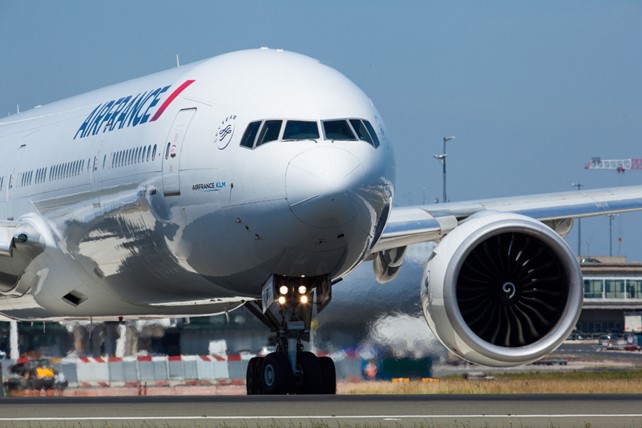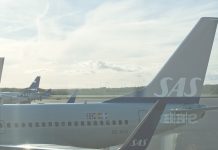What Really Happened Onboard Air France 11?
As regular readers of Live and Let’s Fly will recall, on April 5, 2022 there was an incident with an Air France 777 landing at Charles De Gaulle Airport (CDG) in Paris. The aircraft experienced flight path oscillations and there emerged some rather dramatic audio from the event thanks to the pilots’ microphones being open. The plane landed normally without an emergency declaration but given the nature of what happened the Bureau of Enquiry and Analysis for Civil Aviation Safety (BEA) opened an investigation.
Matthew and I talked about the incident when it happened and I thought it was odd that there was no emergency declared and that once they had the airplane back under control everything was normal. To me this indicated a crew issue rather than an aircraft one.
The Timeline
Yesterday the BEA, which serves roughly the same role in France as the National Transportation Safety Board (NTSB) in the USA, released an update on their investigation into this incident. I’m going to quote a large section of that update here in the interest of absolute clarity with what happened.
“On final, the aeroplane was established on the localizer and glideslope ILS beams. At 07:49, the crew were cleared to land. They configured the aeroplane for landing, the selected speed was 140 kt. The crew then carried out the “Landing” checklist.
At 07:50:20, when the aeroplane was at an altitude of 1,670 ft5 , the PF continued the approach in manual flight: he disconnected the autopilot (AP), leaving the auto throttle (AT) and the flight directors (FD) activated. He then made inputs on the controls for around 15 seconds. The aeroplane followed the movement of the controls and stayed on the ILS path, the left and right roll being less than 2°.
In the subsequent ten seconds, there were less inputs on the wheel. The co-pilot than made inputs on the control column and wheel with a greater frequency, the amplitude was still small, the aeroplane followed the commands, the left and right roll being less than 3°.
At 07:51:06, the co-pilot expressed his astonishment with respect to the aeroplane’s bank angle. The roll inputs were amplified and the average position of the wheel was at around 6° to the left. The aeroplane turned left with a small bank angle. The captain voiced his surprise with respect to the deviation from the flight path.
At 07:51:12, when the aeroplane was at an altitude of 1,115 ft, banked 7° to the left, with the wheel oriented 16° to the left, the crew carried out a go-around. Up until the go-around, the flight path had remained within the operator’s stabilization criteria. The recorded parameters show that the two pilots then simultaneously made inputs on the controls.
In the following second, the position of the wheel reached a maximum value of 27° to the left. One second later, the roll reached a maximum value of 15° to the left and the nose-up attitude was 12°.
At 07:51:16, the captain commented that the plane was going left. The control columns were then desynchronized for 14 seconds due to opposing forces. The captain held the control column in a slightly nose-down position while the co-pilot made several, more pronounced, nose-up inputs. Two brief episodes of wheel desynchronization were also observed.
At 07:51:20, the go-around switches were pushed again increasing the thrust to the maximum thrust available.
At 07:51:23, the pitch reached a maximum value of 24°.
At 07:51:25, the co-pilot called out “Positive climb” and retracted the landing gear. The configuration warning was displayed and the associated aural warning (siren) sounded. The two pilots continued to simultaneously make inputs on the controls. The captain made more pronounced nose down inputs for a few seconds.
At 07:52:06, the captain was the sole person making inputs. The crew completed the go-around actions. The crew analyzed the situation without perceiving the antagonistic inputs made on the controls and the desynchronizations of the control channels. They considered that they could use the AP again and carry out a new approach.
The co-pilot became the PF again. The captain informed the controller that there had been a problem on the flight controls and asked to join the final for runway 27R. The approach and landing took place without further incident.
The sustained input on the controls led to the PTT button and the AP disconnect switch being involuntarily pressed, the latter action causing several activations of the associated warning.
No failure warning was activated during the occurrence.
No anomaly was observed on the aeroplane. At this stage, the analysis of the parameters does not show inconsistencies, in particular between the movements of the controls and the movements of the aeroplane. The validation and the analysis of the parameters are continuing. Particular attention will be given to reproducing the forces applied to the controls and to the relationship between these forces and the movements of the controls.”
It is worth bearing in mind that the cloud ceiling was reported at 300 feet for the approach. This means that the crew was likely in the clouds and fully reliant upon their instruments. It is an approach to their home field that they have performed hundreds of times; something that leads to a feeling of comfort in the cockpit. They were also likely at least a little tired after their long flight but nothing outside the ordinary for 777 crews.
Based on the first officer’s (FO) actions as reported above it seems likely that he may have become disoriented while hand flying the approach. This is indicated by the fact that with the airplane rolling left the FO continues to make left wing down control inputs.
Fighting For Control
What happened next is the part I find most interesting and concerning. Both pilots began to make control inputs at the same time and began to in essence fight each other for control of the aircraft. The way this should have worked (at least at multiple carriers I’ve worked for in the US) is that when the captain observed the aircraft rolling left he should have called “bank angle”.
This tells the FO that he needs to correct this parameter. (Note: if the captain is the Pilot Flying or PF everything is reversed if he makes a similar error.) The proper response is “correcting” which tells the other pilot that his call has been acknowledged and proper action is being taken to address it. If the FO says nothing or continues to roll left the captain should repeat his call out. If there is still no response the next call out is a firm “my airplane” or “I have the controls” to indicate that he is taking control.
This is a key point. One of the things that should never happen in an airline cockpit is two pilots fighting over the controls of the jet. Hence you have a Pilot Flying or PF (in this case the FO) and a Pilot Not Flying or PNF (in this case the captain). The PNF should keep his hands off the aircraft controls unless he is assuming the role of PF in which case he needs to clearly and firmly call this fact out so that there is no doubt about who is flying the airplane. Its apparent from both the BEA’s update and the audio transcripts that this didn’t happen as it should have on that flight. That it didn’t seems to be the central cause at this time of what created this incident.
























